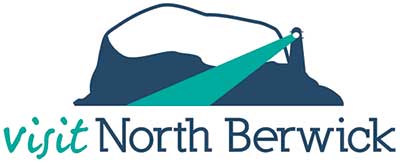North Berwick Abbey
This house originally built for Cistercian nuns was founded in the third quarter of the 12th century on land granted by the Earl of Fyfe. Their benefactors were Duncan, Earl of Carrick from whom came a revenue from land, the Church of Maybole in Ayrshire and some estates in the immediate neighbourhood of North Berwick. Little remains of the convent, there is an oblong range of conventional buildings constructed of local rubble with yellow freestone dressings. The basement floor contains four cellars ceiled with semi-circular barrel vaults. There are traces of a fireplace on the floor above. There is a tower which is late 16th century and is built of ashlar.
The duties of the nuns of this abbey were to receive and give shelter to passing pilgrims.
The 1907 Colonel Guy Speir and his wife, who was a Fletcher of the Saltoun bought from the abbey farm 6 acres of ground including the ruins of the abbey. Towards the end of that year the foundation stone of the present house was laid. This stone can be seen at the main entrance and bears the points of the compass. Coins of the Realm were placed beneath the stone by colonel Speir. The house which was built of local ‘law’ stone was completed in 1908. Among the many guests to stay at ‘The Abbey’ was Lord Kitchener.
In the late 1950’s the Speirs sold their home to the Edinburgh Corporation Social Services Department for the princely sum of £5,000. On the 10th November, 1960 the Lord Provost of Edinburgh, J. Greig Dunbar opened the house in its present form, originally as a holiday home for the elderly residents of Edinburgh and then at a later date to take permanent residents but also retaining accommodation for holiday makers. With the coming of regionalisation the Lothian Regional Council maintained the 26 bedded home in the same form. The residents and holiday makers coming from the City of Edinburgh district only.
(article supplied by Alison Wright, NBHS Pupil ©2011)

